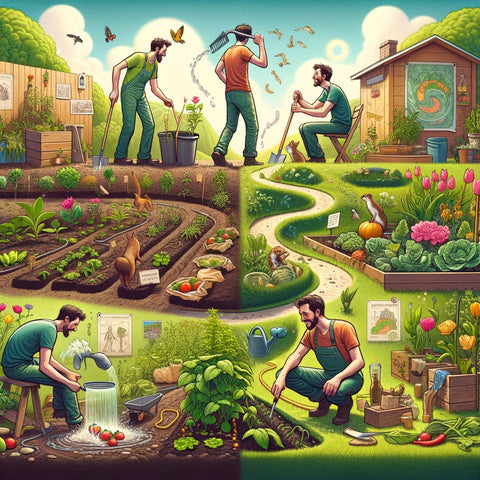The Impact of Permaculture Garden Design
The Permaculture Diaries: My Journey to a Greener Thumb
Permaculture
The goal of permaculture garden design is to mimic the natural environment as closely as possible through the application of ecological principles to gardening. My perspective on gardening and my relationship with nature have been profoundly impacted by this approach. Rather than opposing natural systems, permaculture has shown me how to work in harmony with them to build landscapes that can withstand the test of time.
Any permaculture garden design is built upon the foundation of active and meticulous observation. We meticulously documented the area weather, soil, wind speed and direction, and flora before making any changes. In order to incorporate the site's unique characteristics into the garden design, it is essential to gather site information during this first stage.
Using Areas
In a permaculture garden, the interior is referred to as Zone 0, and the exterior as Zone 5. Because they grow closest to the kitchen, the herbs and vegetables that are utilized the most thrive in Zone 1 of my garden. With the expansion of the zones, the need for human intervention decreases. With this zoning method, the garden's space and energy consumption may be maximized.
Improving Soil Conditions for Better Health
A sustainable garden is built upon rich, organic soil. Soil is more than just a place for plants to flourish; it's an ecosystem that requires constant maintenance. Composting, mulching, and not using synthetic fertilizers are the organic methods I've decided to use to boost soil fertility. These practices not only increase the soil's fertility and structural integrity, but they also encourage the growth of beneficial microbes, which are essential to a balanced garden ecosystem.
Plant Stacking and Polycultures
Layers, or "stacks," of plants are a common permaculture arrangement that mimics the hierarchical form of natural ecosystems. By maximizing space use, this approach promotes the formation of mutually beneficial connections among plants. The use of polycultures, which are communities of interdependent plant species, may improve soil quality, agricultural output, biodiversity, and pest control all at once.
Energy Collection and Preservation
A key component of permaculture design is the utilization of the garden as a system for collecting and storing energy. I installed a rainwater collection system and planted deciduous trees on the south side of my yard to provide shade in all seasons. Your activities will help the garden become more resilient and self-sufficient.
Building a Strict Framework
With the goal of minimizing inputs and maximizing outputs, a permaculture garden is designed to be purposefully self-sufficient. If you have too much of something in the garden, you can always find another use for it. Soil quality is improved and edible plant life is encouraged by composting my food scraps.
Highlights and Lowlights
Not everyone is cut out for the rigorous process of permaculture garden planning, what with its high learning curve and continual design adjustments. Regardless, the advantages are enormous. My yard is now a true food forest, overflowing with fruits, vegetables, herbs, and other edibles. It's a beautiful and peaceful place that contributes to Earth being habitable for all living things.
Beyond only following a set of guidelines for growing plants in a permaculture garden, the principles of permaculture dictate how humans should interact with the land. My eyes were awakened to the transformative power of nature's diversity and the profound impact of thoughtfully designed buildings on every level of existence. 
the funny story of a man's permaculture garden planning journey from novice to advocate. It shows his garden's lively ecology, full of obstacles, delights, and surprises. The image shows how permaculture can change lives, from fighting weeds and playing with wildlife to harvesting his first veggie and resting in his green sanctuary. The warm, engaging design emphasizes interacting with nature, including comedy and presenting the beauty of a sustainable, productive ecology.





Leave a comment